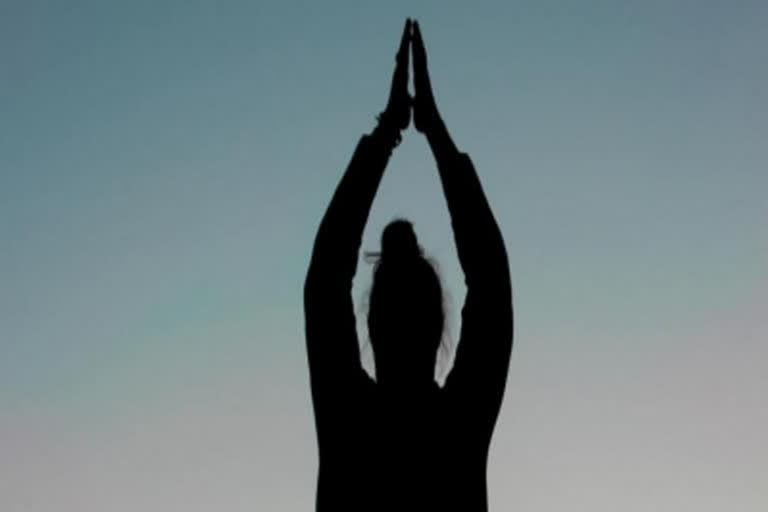Hyderabad: The tradition of practising yoga in India dates back to around 5000 years old and is considered to be a wonderful science of harmony between body and soul. It is believed that Shiva had given the knowledge of yoga to his seven disciples, on the first full moon day after the summer solstice. Hence the day is also celebrated as Shiva's incarnation. By practising Yoga, one can even achieve their spiritual goals with proper discipline and practice.
Yoga is a spiritual discipline based on an extremely subtle science, which brings out the harmony between mind and body. It is also considered an art and science of healthy living. It is a mix of physical, mental and spiritual practices which originated in ancient India, with a view to attaining a state of permanent peace of mind in order to experience one's true self. The word ‘Yoga’ comes from the Sanskrit word ‘Yuj’, meaning ‘to join’ or ‘to yoke’ or ‘to unite’. The aim of Yoga is self-realization, which helps one overcome all kinds of sufferings leading to 'the state of liberation' (Moksha) or ‘freedom’ (Kaivalya). Living with freedom in all walks of life, health and harmony shall be the main objectives of Yoga practice. Yoga is an inner science that helps human beings achieve mastery over their destiny.
Yoga has been on since pre-Vedic times and the historical pieces of evidence have been witnessed since 2700 BC till the period of Maharishi Patanjali who had written the book Yogasutra. According to Yogic lore, Shiva has been described as the first yogi or Adiyogi. Several thousand years ago, on the banks of the lake Kantisarovar in the Himalayas, Adiyogi had imparted his profound knowledge to the seven sages. It was these sages who carried forward the powerful yogic science to various parts of the world, including Asia, the Middle East, Northern Africa and South America.
Going down the annal of history, it is understood that 500 BC - 800 A.D is the most prominent period in the history and development of Yoga. It was during this period that the commentaries of Vyasa on Yoga Sutras and Bhagavadgita etc. came into existence. This period can be mainly dedicated to two great religious teachers of India –Mahavir and Buddha. The period between 1700 - 1900 A.D. is considered as the modern period in which the great Yogacharyas- Ramana Maharshi, Sri Ramakrishna Paramahamsa, Paramahamsa Yogananda, Vivekananda and others had contributed to the development of Yoga. This was the period when Vedanta, Bhakti yoga, Nathayoga or Hatha-yoga flourished. The Shadanga-yoga of Gorakshashatakam, Chaturanga-yoga of Hathayogapradipika, Saptanga-yoga of Gheranda Samhita, were a part of Hatha-yoga.
Swami Vivekananda had played a crucial role in promoting Yoga to Western countries, especially with his address at the World Parliament of Religions in Chicago 1893. Sri Aurobindo - Founder of Sri Aurobindo Ashram, BKS Iyengar - Founder of Iyengar Yoga, Baba Ramdev - Founder of Patanjali Group of Institutions, Bharat Bhushan - founder of International Yoga Festival and Sadhguru Jaggi Vasudev the founder of the Isha Foundation are responsible for the spread of Yoga in the World.
The idea of International Day of Yoga was first proposed by the current Prime Minister of India, Narendra Modi, during his speech at the United Nations General Assembly (UNGA), on 27 September 2014.
The theme for International Yoga Day 2021 is “Yoga for well-being.” This theme is relevant in today's time, as the world reels from the effect of the Coronavirus pandemic.
Why celebrate International Yoga Day on 21st June?
The United Nations General Assembly had proposed on December 11 that June 21 be declared "International Yoga Day."
Purpose of Yoga - The ultimate goal of Yoga is Moksha (liberation) though the exact definition of what form this takes depends on the philosophical or theological system with which it is conjugated.
Yoga Techniques - There are different Yoga techniques, The most common among them are- Surya Namaskar: Which is a salutation to the Sun. It is known to ease stress and give you peace of mind besides increasing your levels of concentration. Dhyana(Meditation): It is the state of Mind wherein there are no sensor thoughts. It leads to a deeper level of relaxation, reduces anxiety, decreases muscle tension and headache. Pranayama: It increases the spiritual power and confers cheerfulness and inner peace.
Benefits of Yoga:
Yoga improves strength, balance and flexibility.
It helps with back pain relief.
Yoga can ease arthritis symptoms.
It benefits heart health.
It relaxes you, to help you sleep better.
It can mean more energy and brighter moods.
It helps you manage stress.
It connects you with a supportive community, and
It promotes better self-care.



